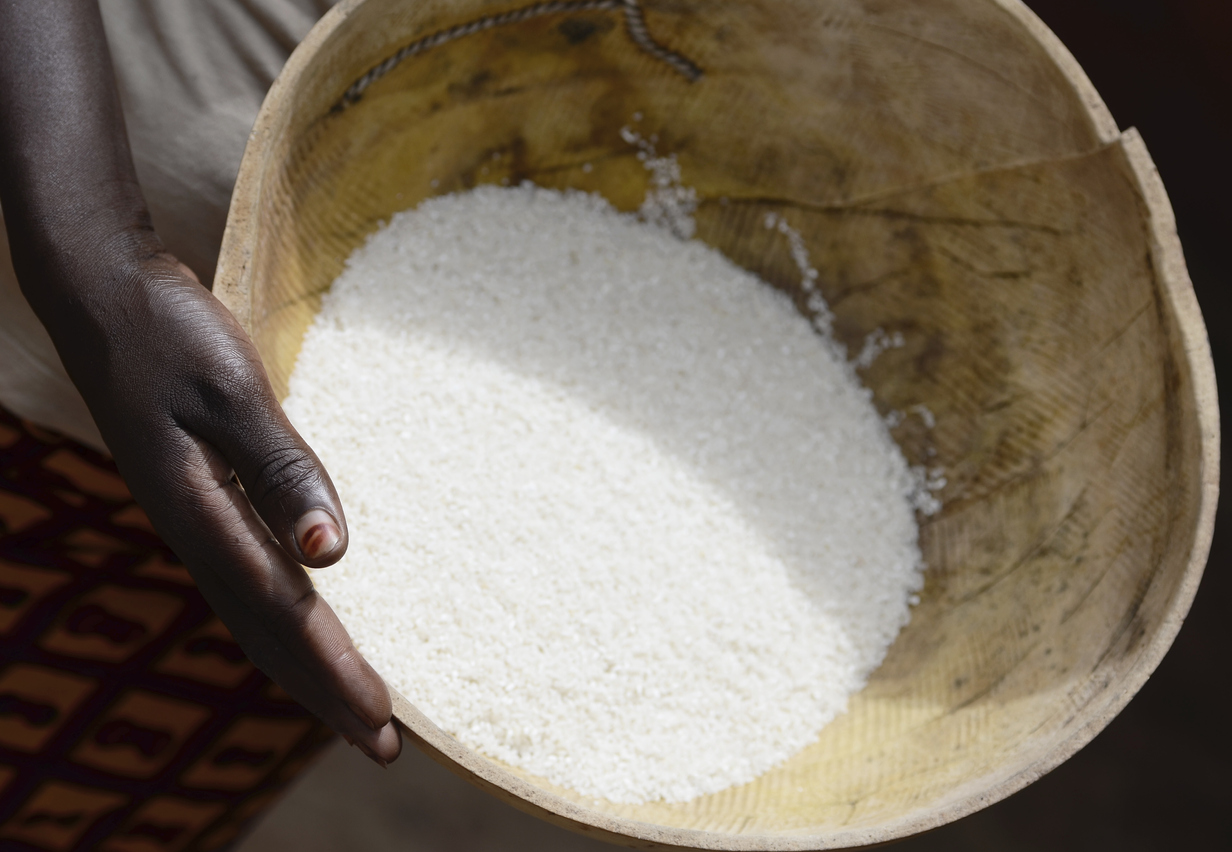A Guide to Rice Farming in Nigeria – Learn the Basics and Increase Your Yields
A Guide to Rice Farming in Nigeria – Learn the Basics and Increase Your Yields
Rice farming is an important part of the Nigerian agricultural sector, and one of the most widely cultivated crops in the country. It is a valuable source of nutrition and income for many Nigerians, and rice farming is an essential part of the economy. It is also a major source of employment for millions of people in the country. However, rice farming can be a difficult and time-consuming process, and it is important that farmers have the right knowledge and skills to maximize their yields. This guide will provide an overview of the basics of rice farming in Nigeria, as well as tips and tricks to help farmers increase their yields and make the most of their crops. With the right information, farmers can make the most of their land and resources and ensure a successful and profitable harvest.
Overview of Rice Farming in Nigeria
Rice is one of the most widely cultivated crops in Nigeria, and a valuable source of nutrition and income for many people in the country. It is an essential part of the Nigerian diet, and an important source of income for millions of people in the country. However, rice farming can be a difficult and time-consuming process, and it is important that farmers have the right skills and knowledge to maximize their yields. Rice is grown across the country, in a range of different environments and ecosystems. Farmers in different regions will need to adapt their rice farming practices to suit local conditions and produce the best possible rice crops. Rice is a very water-intensive crop and requires large quantities of water to thrive. In most regions, rice is grown in irrigated fields and requires a large amount of water to thrive. Farmers will need to implement an effective irrigation system to ensure their crops get enough water during dry seasons.
Soil Requirements and Preparation
For the best results, rice crops should be planted in rich, fertile soil that is full of nutrients and minerals. Many farmers will use a combination of organic and inorganic fertilizer to boost nutrients in their soil and maximize crop yields. Before planting, it is important to thoroughly prepare your soil to ensure you have the best possible soil conditions for your crops. This includes amending your soil with fertilizer, improving soil structure and drainage, and removing any weeds or pests. For the best results, many farmers choose to use paddy soil for rice farming. This is because paddy soil is particularly rich in nutrients, has excellent water-retention properties, and is easy to work with and harvest. To create paddy soil, farmers will use existing soil and mix it with organic matter, such as rice stalks or coconut husks. This will help improve soil conditions and make it suitable for growing rice crops.
Planting and harvesting methods
Once your soil is ready, you can begin planting your rice crops. You should plan your planting schedule based on local weather conditions, and make sure to plant your crops at the right time for your region. It is important to consider the weather and the amount of water available to your crops. Ideally, farmers should wait for the rainy season to begin planting their rice crops. Rice is a long-season crop, and farmers will need to wait until the seeds have sprouted and the young rice plants are at least 40 centimeters tall before they begin harvesting them. When harvesting, it is important to minimize harvesting in wet conditions to prevent the spread of diseases and pests.
Irrigation Systems
Rice is a very water-intensive crop, and some regions receive less rainfall than others. In these areas, farmers will need to implement an effective irrigation system to ensure their crops get enough water. The best option will depend on the size of the crops and available resources. For small family farms, the simplest option is to create a manual irrigation system. A manual irrigation system can be as simple as a large bucket on a rope, used to scoop water from a nearby river or well. This can be a cheap and effective method of watering your crops, but it will require frequent emptying and refilling. For larger farms and commercial operations, it is important to implement a more automated irrigation system. There are a wide variety of options available, ranging from simple to extremely sophisticated. Depending on the specifics of your operation, there are a wide variety of systems available, from sprinklers and drip irrigation to furrow irrigation.
Fertilization and Weed Control
Rice crops are heavy feeders and require a large quantity of nutrients and minerals in order to thrive. This means that farmers will need to regularly apply fertilizer to their crops to boost their nutrient levels. For a successful rice harvest, it is important to regularly apply fertilizer to your crops. This will help boost their yield and make sure they get the nutrients they need to produce a valuable harvest. There are a wide variety of fertilizer options available, and many fertilizer brands produce special varieties specifically designed for rice. Read the instructions carefully, before buying a fertilizer brand to ensure that it is suitable for rice crops. Weed control is an important part of rice farming, but it is essential to use the right methods to prevent damaging your crops. Manual weeding is an effective method for removing a few weeds, but it is not suitable for large-scale weed control. For a large area, it is best to use herbicides, or a weed killer designed for use on rice crops.
Pest and Disease Management
Rice is susceptible to a wide variety of pests and diseases, but farmers can reduce the risk of damage and destruction with careful management and vigilance. It is important to regularly inspect your crops for signs of infestation and damage and implement pest control measures. This will help keep your rice crops as healthy as possible, and increase yields by preventing pests and diseases from spreading to other plants. For small-scale farmers, it is possible to manage pests and diseases using organic methods. For larger farms, it is important to use a combination of both organic and chemical pest control methods. This will protect your crops while minimizing the risk of damaging your environment.
Storage and Transportation
Once your rice harvest is ready for harvest, it is important to carefully store your crops to prevent damage and pests. For small-scale farmers, it is usually possible to store your crops in large, open containers. Larger growers may need to use specialized storage facilities to protect their crops from pests. For commercial operations, it can be difficult to store all of your crops in one location. For large quantities, it is important to ensure that they are properly transported to their destination to prevent damage. There are a variety of methods available, such as storing your crops in bags, sacks, or containers. For smaller quantities, farmers can use bags or containers to store their rice. There are several types of bags and containers available, ranging from large sacks to smaller bags designed for individual servings.
Tips and Tricks to Increase Yields
When growing rice, it is important to pay attention to detail and make sure that you are following correct procedures and getting the best results from your crops. To get the best yields from your rice crops, be sure to follow these tips and tricks. – Choose the right variety: When choosing a rice variety, it is important to consider local conditions and the expected yield of a particular variety. There are a wide variety of varieties available and each one will have different properties. Some varieties are better suited to specific conditions and environments, and some varieties are higher yielding and more suitable for commercial production. – Use high-quality seeds: The quality of your seeds is extremely important. Make sure you use high-quality seeds and store them correctly to ensure they are viable. Choose seeds from reputable brands, and make sure you store them in a cool, dry place. – Choose the right type of soil: It is important to choose the right type of soil for growing crops. Different varieties of rice prefer different types of soil, and some soils are better than others at growing rice. – Apply fertilizer: Make sure you regularly apply fertilizer to your crops. This will help boost their yield and make sure they get the nutrients they need to produce a valuable yield.
Financing and Access to Markets
Farming is an expensive venture and many farmers in Nigeria struggle to afford the necessary tools, equipment, and resources. There are several ways to finance your rice farm, including accessing loans, selling shares in future crops, or finding investors. It is important to consider any costs associated with these methods and find ways of minimizing these expenses. You can do this by carefully planning your inputs, outputs, and expected yields. You should also consider partnering with other farmers to








LEAVE A COMMENT
You must be logged in to post a comment.